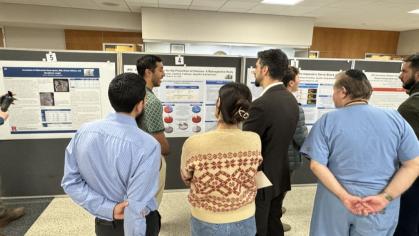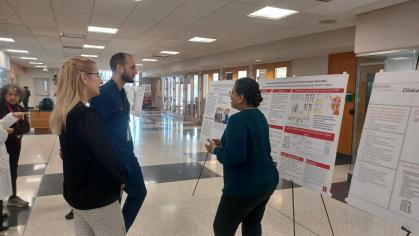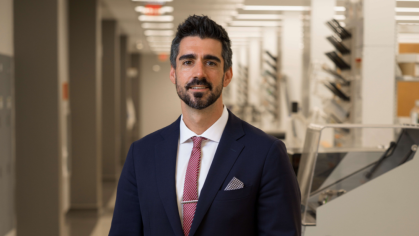Dentist, and Narwhal Expert, Visits RSDM
 Martin Nweeia examines a collection of narwhal tusks.
Martin Nweeia examines a collection of narwhal tusks.
In his Connecticut dental office, it’s safe to say that Martin Nweeia doesn’t treat many narwhals.
For that, he has to travel to the Arctic, where he doubles as a marine mammal biologist, uncovering the mystery behind the narwhal’s strange, elongated tusk. Nweeia, a guest speaker at RSDM’s Research Seminar Series this month, has been researching narwhals for more than a decade.
Since the narwhal doesn’t have any teeth -- it swallows fish whole -- and doesn’t use its tusk for hunting or fighting, why does it have a tusk at all? “As a dentist, I thought, ‘there has to be more to this,’’ said Nweeia.
A part-time clinical professor at the Harvard School of Dental Medicine, Nweeia has led studies indicating the narwhal’s tusk is a sensory organ that helps it navigate and perhaps find food. His research on narwhals in their environment suggests the tusks can sense changes in water salinity. When the mammals were hooked up to monitoring equipment, their heart rate changed depending on the salinity level, he told the group.
The narwhal tusk seemes built to sense changes in the water. Unlike human teeth, its soft on the outside and hard on the inside, with tubules that run from the tusk's pulpy innermost core, which is full of blood vessels and nerves, to the brain.
Martin Nweeia researching the narwhal in its natural habitat.
Part of Nweeia’s research, which has been funded by the National Science Foundation and the National Geographic Society, among other organizations, involves drawing upon the knowledge of the Inuits, the Arctic’s indigenous people, to help researchers learn more about the narwhal.
Often, said Nweeia, hunters and other locals know far more about the species than scientists. “It doesn’t come from a laboratory, it comes from them,’’ he said. “Do we want to expend all this effort to find something out, or do we want to just listen to people?’’
Nweeia says he’s often asked how a dentist like himself became bent on studying narwhals.
His answer?
“I’m just a curious kid.''



